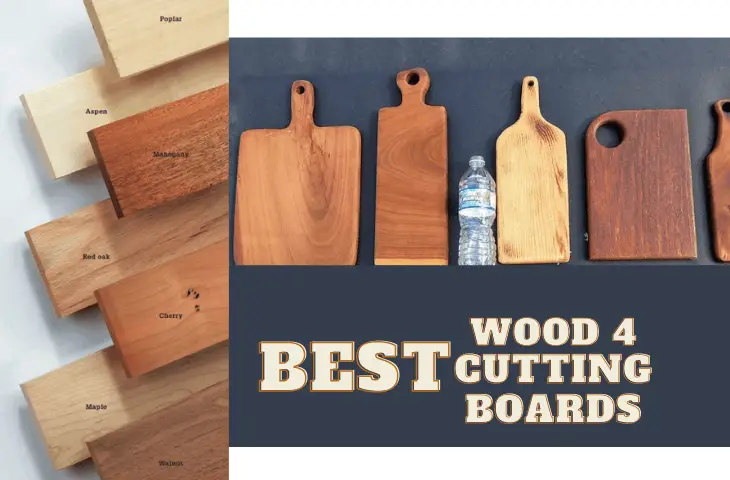Cutting boards are made from materials such as Mable, plastic, glass, or wood. Ever wondered why wooden cutting boards stand out from the rest? Here are the reasons why;
- Safety: Wood is safer than plastic and glass. Plastic cutting boards get dented easily; the dents can harbor bacteria and transfer them to your food. Glass is too slippery and can increase the risk of cut accidents.
- Comes in various styles: There are numerous types of wood, each with its unique color and grain pattern. Wooden cutting boards come in two designs; edge-grain boards and end-grain boards. That means you can even create two cutting boards of a different style using one type of wood.
- Durability: Wood is more durable compared to glass and plastic. With proper care, wooden cutting boards can last for decades.
- Affordability: A wooden cutting board is more affordable than one made of Mable.
In this article, we will look at the best woods for cutting boards
3 Must-Have Features of Woods Used As Cutting Boards
While wood is better than the materials mentioned above, not all types of wood are suitable for making a cutting board. Thus, you must ensure to choose an appropriate kind of wood. The right wood will not only keep your knives sharp but will also keep your kitchen hygienic.
The wood you choose should have the following characteristics;
- Hard: A harder wood will be more durable. It will also be more resistant to scratches, dents, and dings. Any wood with a Janka rating of 1,000-1,800 lbf and above will serve you well. It would be best not to pick an extremely tough wood as it will dull your knife blades quickly.
- Non-toxic: Certain types of wood are toxic and can therefore contaminate your food. It is recommendable that you stick to woods that produce edible fruits, nuts, or sap.
- Low-porosity: Go for woods with a closed grain as they will not absorb moisture. An open grain can be a safety hazard as it allows for moisture absorption. The moisture encourages the growth of mold which can lead to food contamination.
With these characteristics in mind, let’s look at ten types of wood you can use to make a cutting board.
10 Best Woods for Making Cutting Boards
1. Teak
| Characteristic | Comment |
| Hardness | Very Hard |
| Durability | Very durable |
| Grain pattern | Open |
| Effect on knife blade | Dulls knife blades quickly |
| Toxicity | Non-toxic |
| Resistance to scratches | High |
Teak ranks at 1,070 lbf on the Janka scale. It’s the most durable wood when compared to all the woods discussed in this article.
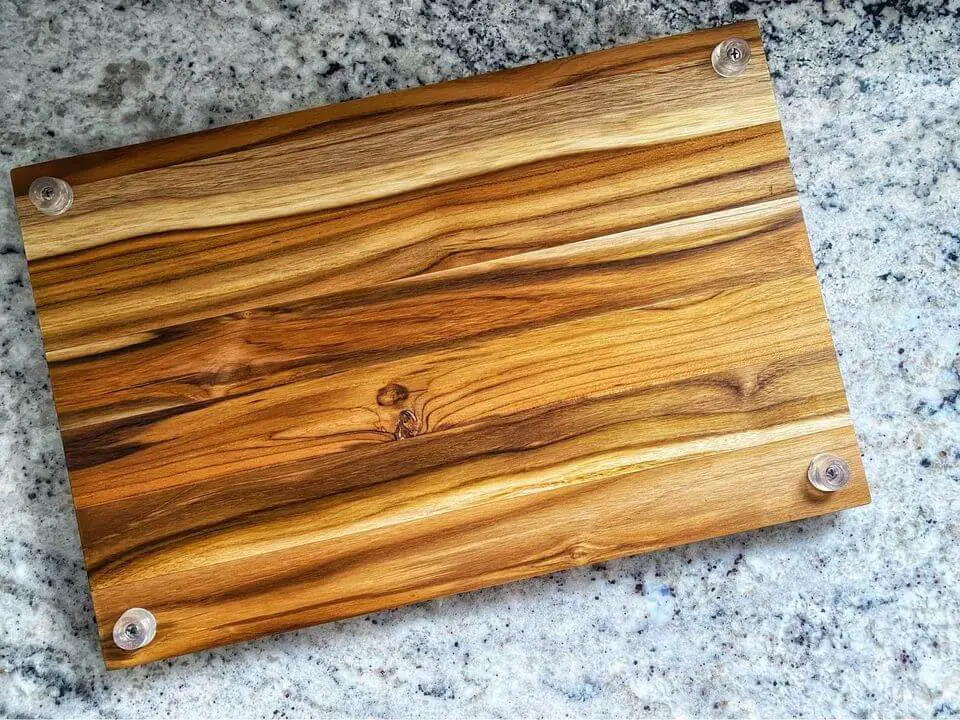
It is a stable wood whose end grain is highly resistant to splitting and warping. Cutting boards made from teak are also highly resistant to scratches and dents. They are heavy and less likely to rock or slide when you’re using them.
Teak contains natural oils that make it highly resistant to decay. Thus, its cutting boards have minimal maintenance requirements compared to other woods mentioned here.
This wood’s color allows it to mask stains better than most woods. Unfortunately, teak contains high silica content, which dulls knife blades quickly.
2. Hard Maple
| Characteristic | Comment |
| Hardness | Very hard. |
| Durability | Very durable |
| Grain pattern | Closed |
| Effect on knife blade | Doesn’t dull knife blades quickly |
| Toxicity | Non-toxic |
| Resistance to scratches | High |
Ranking at 1,450 lbf on the Janka scale, hard maple is the industry standard for cutting boards. It is highly resistant to scratches and dents. Despite its hardness, hard maple doesn’t dull knife blades quickly.
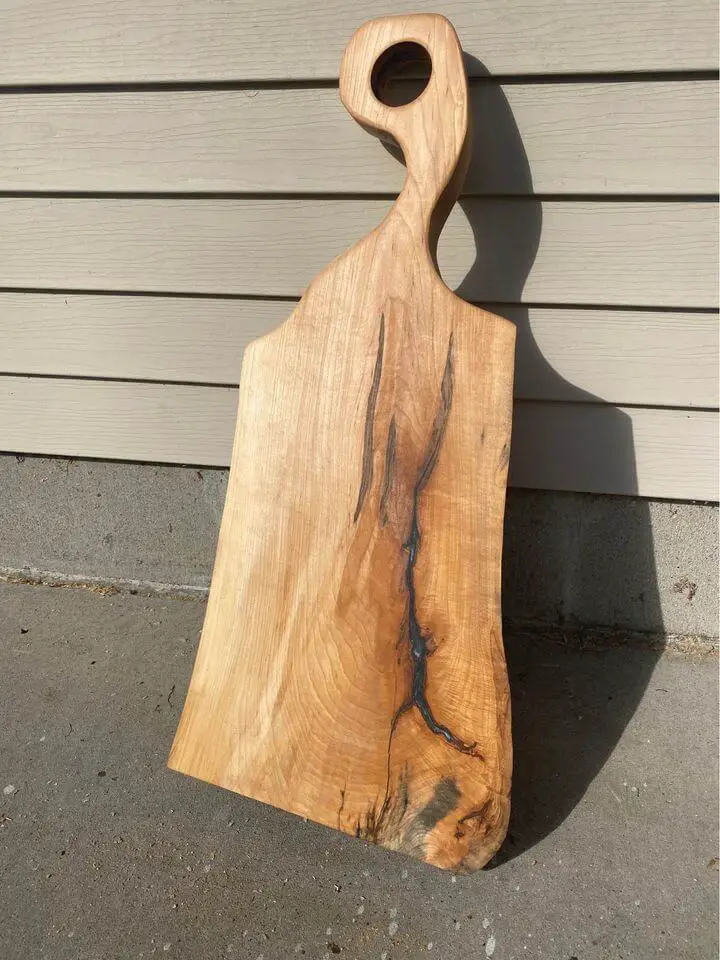
A hard maple tree produces edible and nutritious fruits called samaras. The wood is, therefore, considered non-toxic. It has a closed-end grain that doesn’t absorb moisture. You don’t have to worry about dirt or bacteria building up on your cutting board.
Although beautiful, hard maple tends to show stain easily. Thus, cutting boards made from this wood require a regular maintenance routine. One effective way of protecting your cutting board is by thoroughly conditioning its surface every 1-2 months.
3. Bamboo
| Characteristic | Comment |
| Hardness | Very hard. |
| Durability | Very durable |
| Grain pattern | Closed |
| Effect on knife blade | Dulls knife blades quickly |
| Toxicity | Non-toxic |
| Resistance to scratches | High |
Bamboo is more of grass than wood. However, it does possess a quality that makes it an ideal cutting board. It ranks at 1,400 lbf on the Janka scale and is one of the most durable materials discussed in this article.
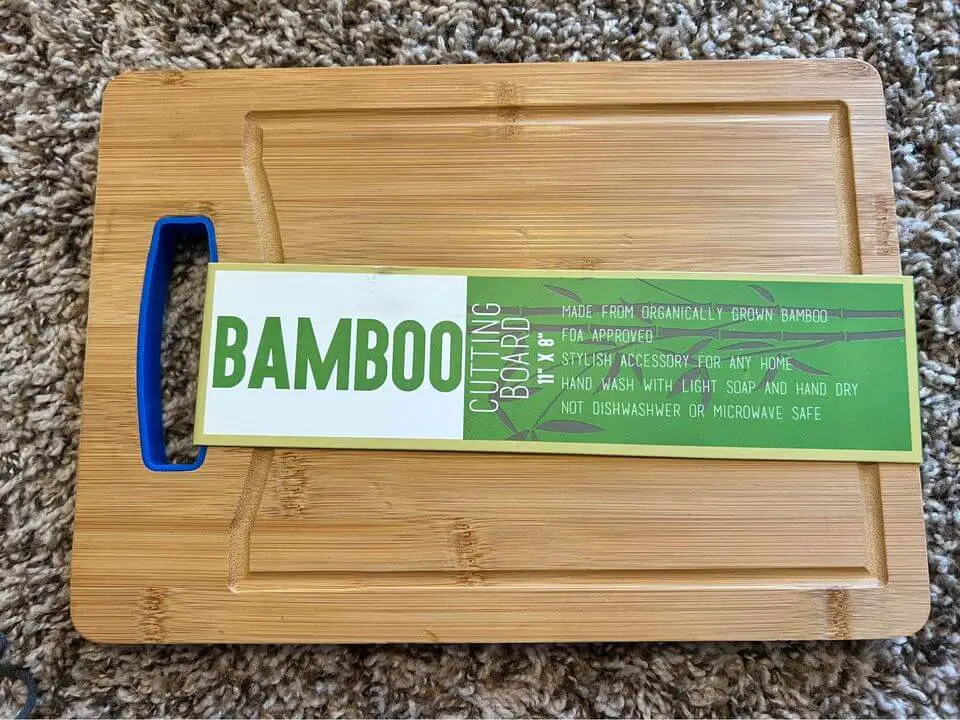
Bamboo is highly resistant to scratches and dents, thanks to its hardness. However, that hardness tends to dull knife blades quickly.
Bamboo is a non-toxic material with a closed grain. Cutting boards made from this material don’t absorb moisture easily. You don’t have to worry about your cutting board warping after a few weeks of using it.
4. Beech
| Characteristic | Comment |
| Hardness | Hard. |
| Durability | Slightly durable |
| Grain pattern | Closed |
| Effect on knife blade | Doesn’t dulls knife blades. |
| Toxicity | Non-toxic |
| Resistance to scratches | Good |
Beech has a Janka rating of 1,300 lbf. It has a dense grain pattern that makes it resistant to scratches and dents. The closed grain pattern leaves no room for bacteria buildup or moisture absorption.
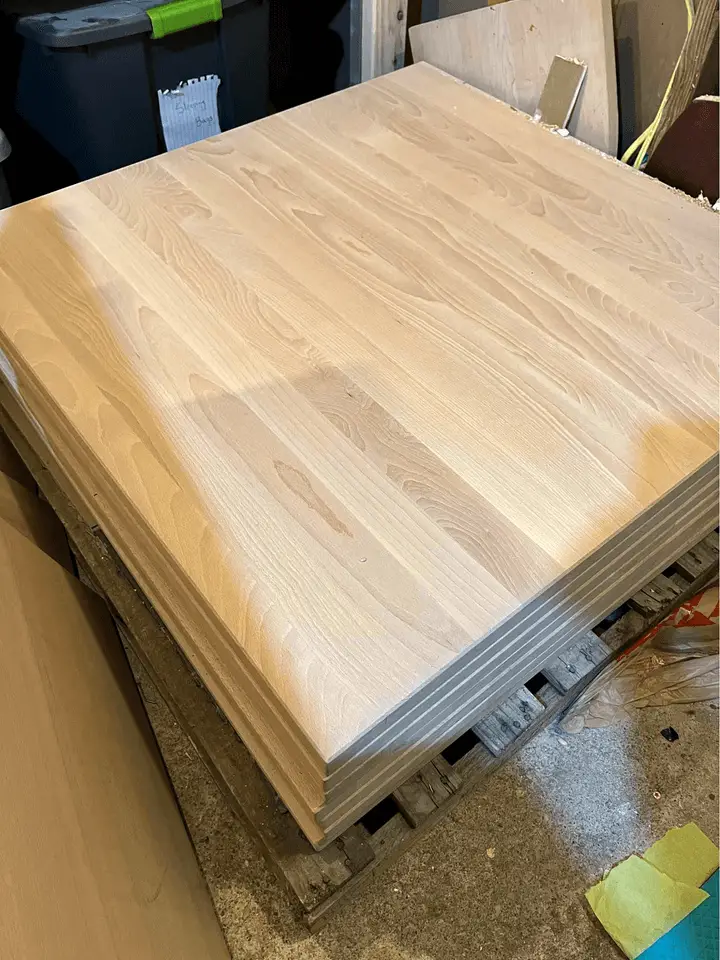
Beech is hardwood but is soft enough to not dull knife blades. Although durable, this wood tends to shrink over time. Fortunately, you can protect your cutting board by thoroughly conditioning its surface every month.
It has a pale cream color that sometimes has a brown or pink hue to it. Its light color tends to show stains easily. But you can solve this problem by adding a stain-resistant coating to your cutting board.
5. Pecan
| Characteristic | Comment |
| Hardness | Very hard. |
| Durability | Very durable |
| Grain pattern | Open |
| Effect on knife blade | Dulls knife blades quickly |
| Toxicity | Non-toxic |
| Resistance to scratches | High |
Pecan is one of the hardest woods used to make cutting boards. It ranks at 1820 lbf on the Janka scale and is harder than maple and beech.
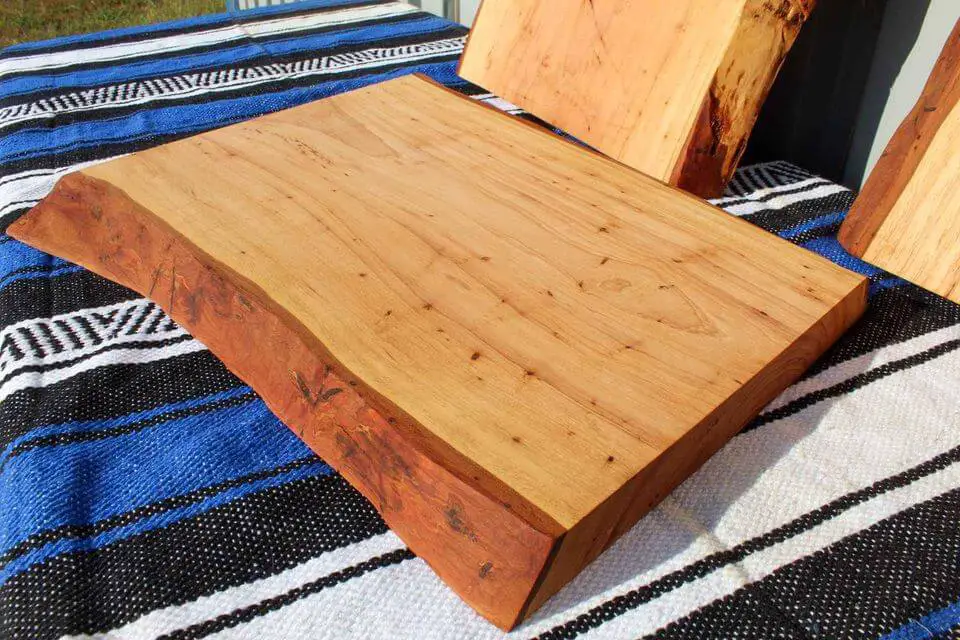
Pecan’s hardness comes at a price; it tends to dull knife blades faster than other hardwoods. On the brighter side, it is resistant to scratches, dents, and dings.
Although pecan is non-toxic, it has open grain. Thus, it’s more susceptible to water seepage. If you opt for this wood, you’ll need to clean the cutting board thoroughly to avoid bacteria buildup.
6. Sweet Cherry
| Characteristic | Comment |
| Hardness | Fair |
| Durability | Fair |
| Grain pattern | Closed |
| Effect on knife blade | Doesn’t dull knife blades quickly |
| Toxicity | Non-toxic |
| Resistance to scratches | Good |
The edge grain of sweet cherry makes really good cutting board. This wood ranks at 1,150 lbf on the Janka scale. Cherry is a non-toxic wood. It also has closed pores, making it a safe wood for use in the kitchen.
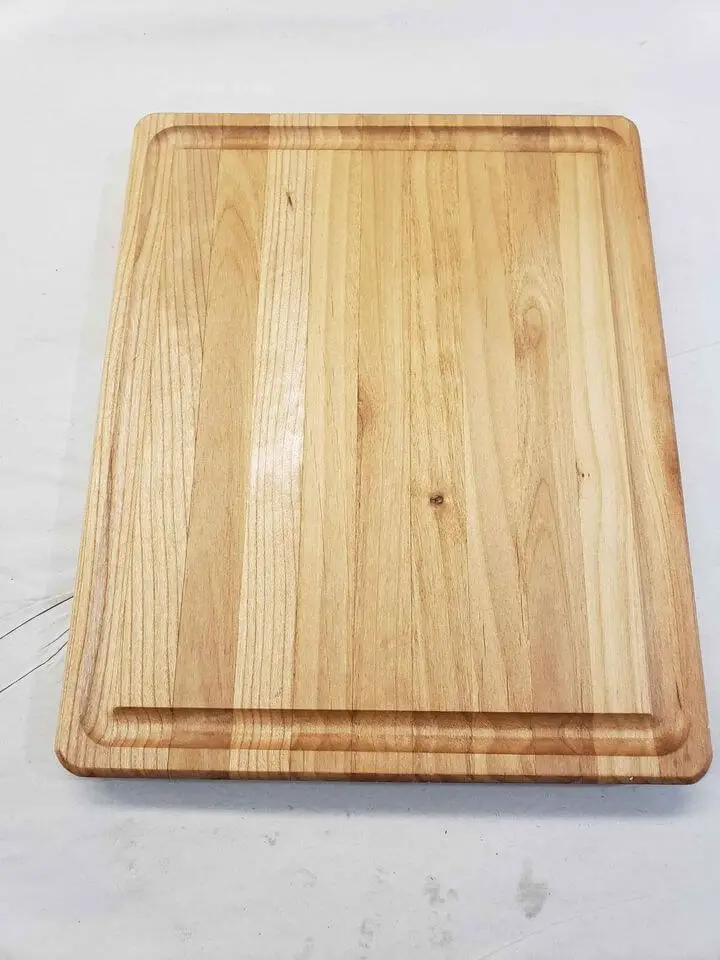
Cherry is soft, and therefore its cutting boards get chipped easily. On a positive note, it doesn’t have a dulling effect on knife blades.
Cutting boards made from this wood are gorgeous. Freshly-cut sweet cherry has a pinkish brown color. As the wood dries, it weathers into a beautiful golden-brown color.
If you opt for cherry wood, ensure that your board’s thickness is at least 2 inches. Anything lower than that may crack after a while.
7. Walnut
| Characteristic | Comment |
| Hardness | Hard |
| Durability | Good |
| Grain pattern | Closed |
| Effect on knife blade | Doesn’t dull knife blades quickly |
| Toxicity | Non-toxic |
| Resistance to scratches | Fair |
Walnut has a perfect hardness of 1,010 lbf. It is slightly softer than maple and therefore more prone to denting. It has a close grain pattern that doesn’t absorb moisture. The grain pattern makes this wood safer as it doesn’t trap dirt.
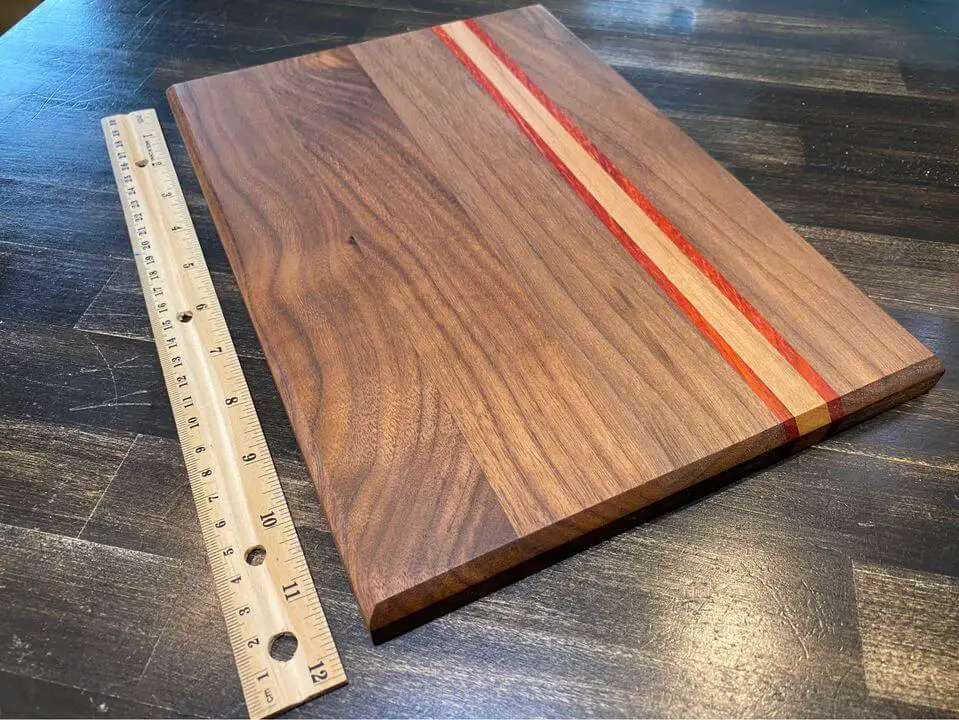
It has a beautiful pale-brown to dark chocolate color that masks stains nicely. Walnut tends to retain its natural color for longer than most hardwoods.
8. White Ash
| Characteristic | Comment |
| Hardness | Hard |
| Durability | Fair |
| Grain pattern | Open |
| Effect on knife blade | Doesn’t dull knife blades quickly |
| Toxicity | Non-toxic |
| Resistance to scratches | Good |
The white ash ranks at 1,320 lbf on the Janka scale. Ash cutting boards have an excellent resistance to shock. You can use them for smashing meat or preparing steak.
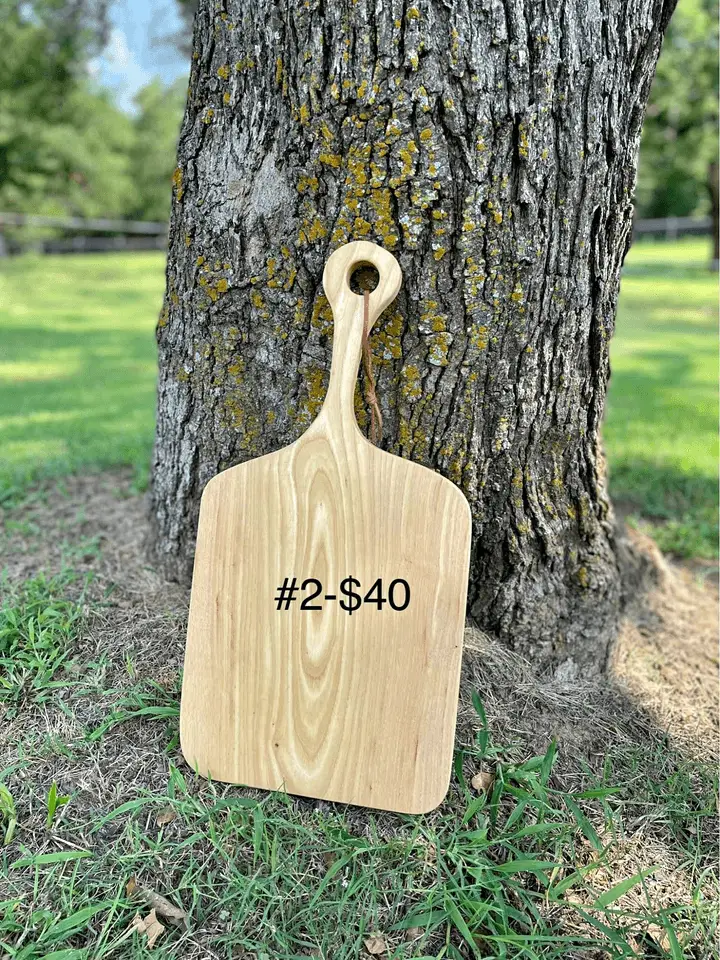
This wood is hard enough to resist scratches but also soft enough not to dull knife blades quickly. The problem with ash is that it has open grain. Thus, its cutting board is more susceptible to water seepage and, therefore, not as durable.
White ash has a light color that shows stains quickly. You may need to protect your cutting board with a stain-resistant coat.
9. Acacia
| Characteristic | Comment |
| Hardness | Hard |
| Durability | Good |
| Grain pattern | Closed |
| Effect on knife blade | Doesn’t dull knife blades quickly |
| Toxicity | Non-toxic |
| Resistance to scratches | Good |
The hardness of acacia depends on a tree’s age. But it ranges from around 1,200 to 1,700 lbf. Cutting boards made from acacia are hard enough to withstand regular use in the kitchen. The wood has closed pores, so you don’t have to worry about your board absorbing moisture.

Acacia is heavy, and its cutting board stays put when you use it. Its density makes it very durable too.
Since the density of acacia varies from one tree to the next, the quality of its cutting boards varies from one board to the next. You might encounter an acacia wood that is too hard. A cutting board made from this wood is likely to have a dulling effect on the knife blade. You may also encounter a soft acacia; one that is likely to get scratched easily.
Acacia is more prone to splitting. Thus, you’ll need to oil your cutting board to prevent it from splitting.
10. Mahogany
| Characteristic | Comment |
| Hardness | Slightly hard |
| Durability | Fair |
| Grain pattern | Open |
| Effect on knife blade | Doesn’t dull knife blades quickly |
| Toxicity | Non-toxic |
| Resistance to scratches | Low |
Mahogany has a Janka rating of 900 lbf. It’s the softest wood among the ten woods discussed in this article. Due to its soft nature, a mahogany cutting board scratches and dents easily. The crevices are sometimes a safety hazard as they provide a breeding ground for bacteria.
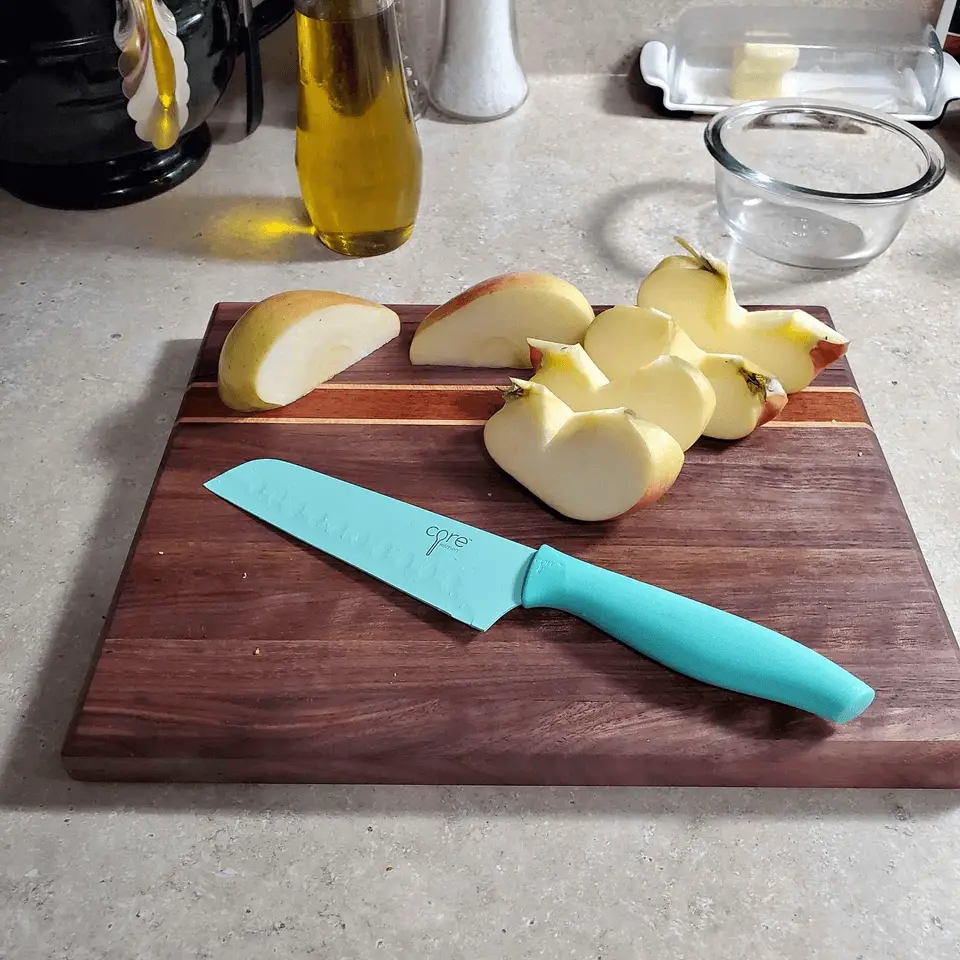
Like walnut, mahogany does not dull knife blades. However, its open grain pattern makes it less safe for use in the kitchen. It tends to absorb a lot of moisture which can result in mold growth.
See related readings
- Best woods for outdoor benches
- Best woods for outdoor table
- Best woods for shelves
- Best woods for carving with Dremel
To Sum It All Up; best wood for cutting board
- Bamboo, hard maple, and teak are the best woods for making cutting boards. They are very hard and hence more durable. They are also non-toxic and have a closed grain pattern.
- Acacia, Beech, sweet cherry and walnut also make good cutting boards. However, they are a bit soft and hence dent easily. Beech has a light color and tends to stain easily.
- Pecan, ash, and mahogany have an open grain pattern. They may not be as durable as the other woods discussed above. These woods may require extra maintenance to prevent them from harboring bacteria.

